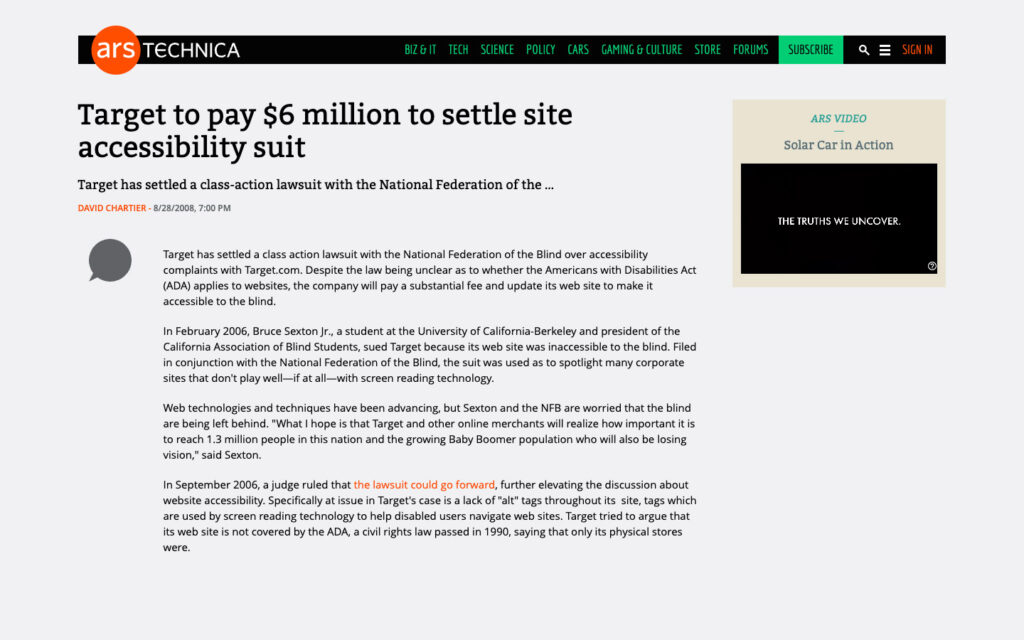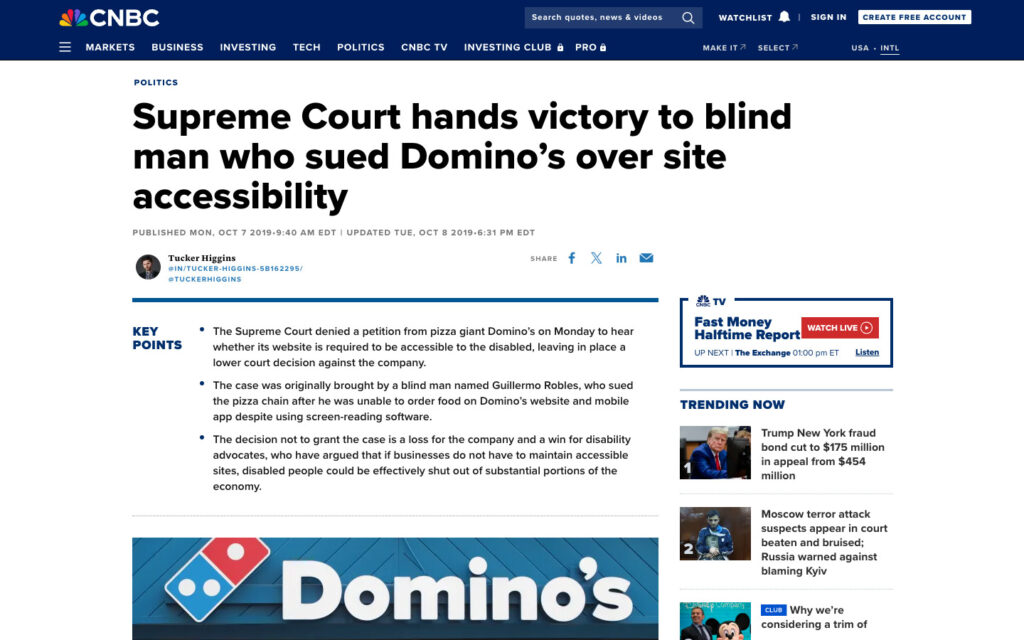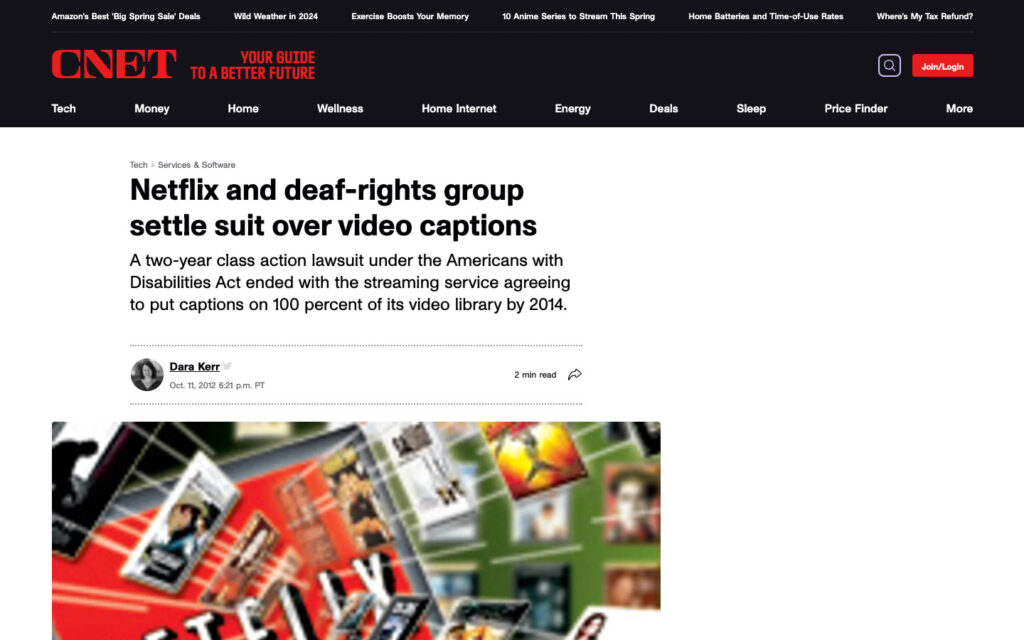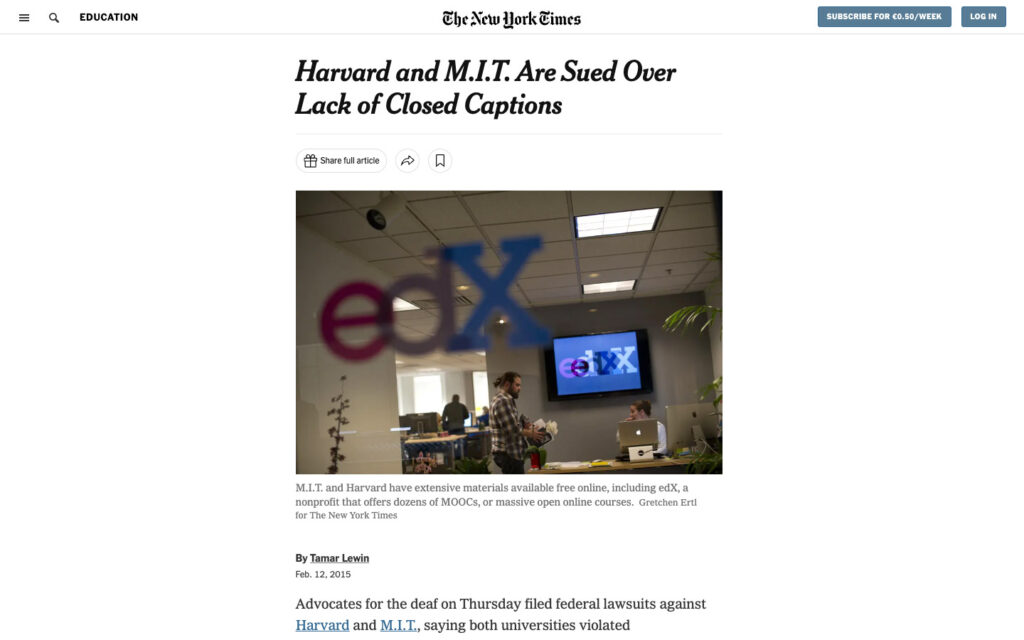

Photo © Jon Tyson
That digital accessibility is (or should be) a very important principle for digital products and services is hard to deny. Technological evolution, in addition to all the transformations widely proclaimed by the industry, must also represent a sincere effort by brands to include the widest range of people, enabling their autonomy along the way. Digital accessibility represents all of this in a very pragmatic way.
However, when we analyze the reality of digital products and services, whether public or private, we see that the scenario is far from positive. Data from the Portuguese Web Accessibility Observatory shows that of the 2025 public sector websites analyzed (on 25 March 2024), the average score given, on a scale of 0 to 10, was 7.2. The same source also states that of the 115,599 pages analyzed, only 15,085 did not contain any accessibility errors using automatic verification methods. In other words, only around 13% of the pages analyzed did not contain any errors that would impair their use in terms of accessibility. And this in the public sector in Portugal, which in recent years has made a very significant effort to make its digital products and services increasingly accessible.
In the private sector the situation is even worse. It’s easy to see when browsing through some of the online platforms of Portuguese brands, with greater or lesser visibility, that compliance with the most basic accessibility best practices is far from being a reality. All of this is very worrying, whether, of course, from the perspective of consumers, or even for the brands’ business. At the end of the day, what this means is that a significant proportion of consumers will find it very difficult or even impossible to use many of these platforms at all. Nobody gains from this.
In truth, if we’re looking for a real change in this paradigm, several things have to change. One of them would be the legislative framework that stipulates minimum digital accessibility requirements for digital products and services in the private sector. This has already changed. In December 2022, Decree-Law No. 82/2022 was published, which determines the digital accessibility requirements that brands will have to meet in the future. This decree-law, also complemented by Ordinance no. 220/2023, transposes into national legislation much of the work carried out at European level by the European Accessibility Act, the legislative result of which was Directive (EU) 2019/882.
Before you start
Before looking at some specific points of the law, it’s important to realize that this has to be a team effort in the company. Bringing the company’s platforms into compliance with the national digital accessibility law is a task that will require the efforts of all departments, including those linked to the legal and juridical dimension of the company. Before starting the technical work of adapting or reconverting the platforms, it is important that the company has a shared reading and understanding of the law and everything it will entail transforming.
What does the law apply to?
The decree-law applies to products and services. This means that it is important to understand the law in these two dimensions of application, i.e. for physical equipment and applications that can be used through that equipment. For each of these two dimensions, the decree-law clearly and pragmatically defines the type of products and services that are and are not covered by this legal framework.
Products
Products to which Decree-Law 82/2022 applies:
- Computer equipment for general consumer use and operating systems for such computer equipment.
- Self-service terminals (payment terminals; automatic teller machines; ticketing machines; automatic registration machines; interactive self-service terminals that provide information, excluding terminals installed as an integral part of vehicles, aircraft, ships or rolling stock).
- Terminal equipment with interactive computer capabilities for consumer use, used for electronic communications services.
- Terminal equipment with interactive computer capabilities for consumer use, used to access audiovisual media services, the main purpose of which is to provide access to these services.
- Electronic book readers.
Services
Services to which Decree-Law 82/2022 applies:
- Electronic communications services, with the exception of transmission services used for the provision of machine-to-machine services.
- Services providing access to audiovisual media services.
- The following elements of air, coach, rail, maritime and inland waterway passenger transport services (websites; integrated services on mobile devices, including mobile applications; electronic ticketing and electronic ticketing services; provision of information on the transport service, including real-time travel information, where only interactive screens are covered in terms of information screens).
- Interactive self-service terminals for urban and suburban transport services and regional transport services, except those installed as an integral part of vehicles, aircraft, ships or rolling stock used in the provision of any part of such passenger transport services.
- The following banking and financial services for consumers (credit agreements; investment services and activities and ancillary services; payment services; services associated with payment accounts; electronic money).
- Electronic books and dedicated computer programs.
- E-commerce services.
From when?
For any transformation to be truly effective, it is very important that it happens in a sustained way and with a sense of reality. In terms of the evolution of the legal framework, this reflects the fact that any law must be accompanied by a period that enables companies to create transition strategies adapted to their context. The decree-law on digital accessibility provides for an initial adaptation period of around two and a half years. In other words, much of what is described in the decree-law will only take effect from June 28, 2025. The decree-law also presupposes some additional transition periods. Once again, before starting the transformation process, it is important to read the legislation carefully and interpret it in a shared way.
Looking at this timeframe, we can get the idea that there is plenty of time for this transformation. And indeed there is some. However, also looking at the reality of many companies, the work that remains to be done is considerable and in many cases very deep. Transforming the digital accessibility of many digital products and services can in many cases mean completely redoing entire solutions, some with a technological legacy of many years. Seen in this light, it may not be that long and the sooner the transformation begins, the better.




What are the consequences?
The type of consequences that can arise from non-compliance with the law are various and can have many different dimensions. First of all, of course, a legal case of this kind can result in fines of different sizes. Naturally, depending on the case, this can be more or less significant. However, when we talk about the consequences of non-compliance with digital accessibility legislation in the sector, the problems for companies that can arise from this can be far more serious than the amount of the fines alone.
Legal proceedings of this kind can have a number of consequences. Starting with the brand’s own reputation. A conviction in such a case gives any brand a negative label. In practice, it becomes public evidence that a brand doesn’t care about a certain group of its consumers. Digital accessibility benefits the experience of all users in general, but it is absolutely essential for people with disabilities to be able to use digital products and services. A brand that is condemned in a case like this ends up indirectly being recognized as a brand that discriminates against this profile of users, not on purpose but simply out of carelessness. It’s not a very positive reputation.
Imagining scenarios in which there are legal proceedings for failure to comply with digital accessibility regulations may seem like too catastrophic a scenario. At some point we might imagine that these are too extreme scenarios or that no one is bothered enough at this point. The truth is that for many people, the lack of accessibility of digital products and services is no mere curiosity. In many cases, without this, many people won’t be able to perform actions as simple as paying their bills, accessing their bank’s app, ordering a product and many other perfectly conventional actions. And this is quite serious.
The history of legal cases related to digital accessibility proves that this may not be an issue to be dismissed. Although in Portugal this is still a very early stage, all over the world we already have some case studies that show us that these kinds of consequences may well exist. For example, the cases in the United States involving brands such as Target, Dominos, Netflix or Harvard University and MIT. In addition to these paradigms, in Spain, right next door, we recently had the example of Vueling, which was involved in a similar case. The lawsuit forced the company to pay something like 90,000 euros and also included a 6-month ban on accessing any kind of state support, which in this case has a very considerable impact on the company’s operations.
Where to start?
Before starting anything, it’s important to carefully read and re-read the European directive, decree-law and ordinance. This is a simplified view of these regulations and it is therefore essential to first read them yourself and draw your own conclusions. Having said that, some of the questions that may arise straight away will revolve around this idea: “I’ve already understood the importance of the topic and the legal implications for the future. So where do I start in my company?”. The answer to this question can take many forms. In almost all approaches, a rigorous assessment of the current state of compliance of the company’s platforms and training are certainly two topics that should be part of any answer.
It is essential that before making an action plan you understand exactly where you stand. In other words, one of the first things to do will surely be to carry out a digital accessibility audit, with the help of experts, to find out where the digital accessibility of the company’s main platforms stands.
Alongside this work, since digital accessibility should almost necessarily be the work of all departments, it may also be important to create training opportunities. Training (with various levels of strategic and technical depth) should be one of the main cornerstones of the transversal development of digital accessibility in the company and it is very important that it reaches all departments without exception.
Everyone in the company will play a key role in this transformation. Everyone, without exception, can and must contribute to building truly accessible digital products and services, with a very significant impact on the lives of all the people who interact with the brand every day.